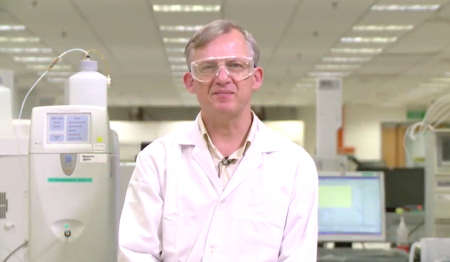I’m working on a new book right now, and as part of my research, I have enrolled in an online course on forensics. My professor is one Roderick Bates, an organic chemist and associate professor at Nanyang Technological University in Singapore. I find him delightful. Soft-spoken, with a pleasant British accent, he wears a white lab coat and safety glasses, and he delivers his lectures about heinous crimes involving wood chippers, analysis of body tissues found in chain saws, and body-dissolving sulphuric acid in bathtubs, with a charming exuberance and a hint of a smile playing on his lips.
In the first week we got an overview of what we’re going to be studying in more depth—stuff like forensic entomology, facial reconstruction, voice recognition, and DNA analysis. Things were pretty simple in Week 1. We saw slides like this:
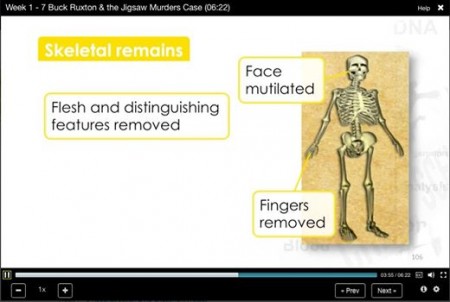 Even though I’m primarily enrolled to learn more about toxicology, I’m finding so much else so fascinating. For instance, Professor Bates showed us this photo of the late North Korean leader, Kim Jong-il. He hadn’t been seen in public for some time, so to quell growing suspicion that Kim Jong-il might be, er, ill, the North Koreans issued this photograph.
Even though I’m primarily enrolled to learn more about toxicology, I’m finding so much else so fascinating. For instance, Professor Bates showed us this photo of the late North Korean leader, Kim Jong-il. He hadn’t been seen in public for some time, so to quell growing suspicion that Kim Jong-il might be, er, ill, the North Koreans issued this photograph.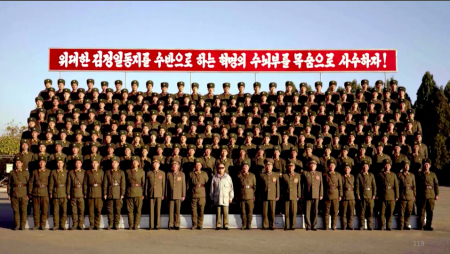 Professor Bates showed us why it’s easy to see the photo has been doctored. If you look closely at the black line running along the white platform behind their legs, you can see that it is not continuous, and the shadows aren’t falling the same way for the Dear Leader as they do for the others in the photo:
Professor Bates showed us why it’s easy to see the photo has been doctored. If you look closely at the black line running along the white platform behind their legs, you can see that it is not continuous, and the shadows aren’t falling the same way for the Dear Leader as they do for the others in the photo: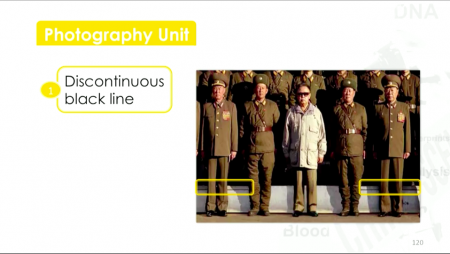
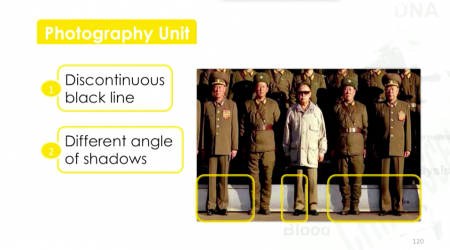 Plus, he explained, a close examination of the pixilation confirmed that the image of Kim didn’t match up.
Plus, he explained, a close examination of the pixilation confirmed that the image of Kim didn’t match up.
I just completed Week 2, and things have started to get a little more complicated. Now we’re seeing slides like these:
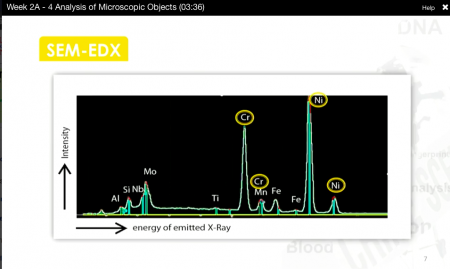
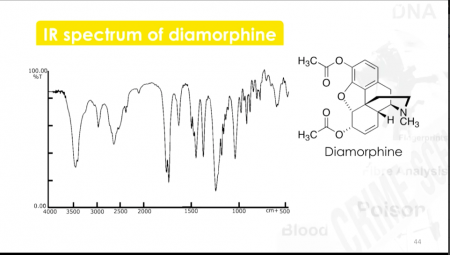
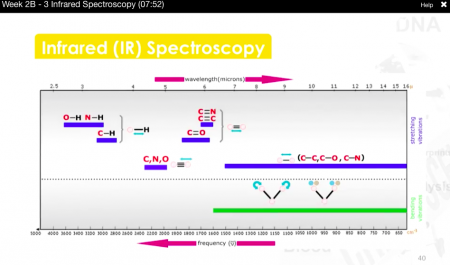 But complicated or not, Professor Bates has remained charming and engaging, and I’m kind of able to follow the chemistry and molecular analysis discussions. I can hardly wait until we get to the toxicology unit!
But complicated or not, Professor Bates has remained charming and engaging, and I’m kind of able to follow the chemistry and molecular analysis discussions. I can hardly wait until we get to the toxicology unit!